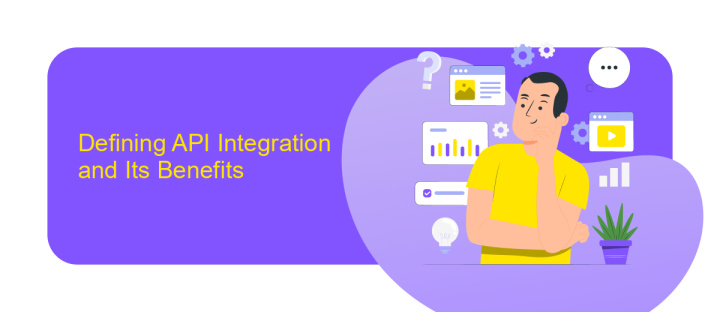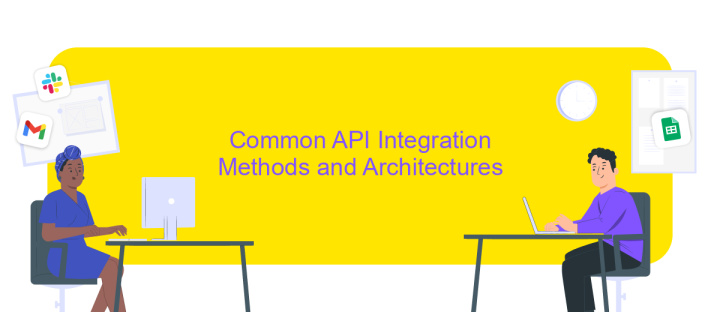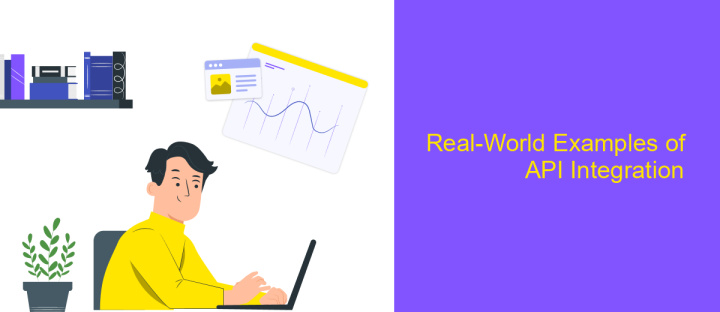What Does API Integration Mean
API integration is a crucial component in today's digital landscape, enabling seamless communication between different software applications. By allowing diverse systems to exchange data and functionalities, API integration enhances efficiency and innovation. Whether it's connecting cloud services, automating workflows, or enhancing user experiences, understanding API integration is essential for businesses looking to stay competitive and responsive in an increasingly interconnected world.
Understanding APIs and Their Role in Software
APIs, or Application Programming Interfaces, are crucial components in the software development landscape. They serve as bridges, allowing different software applications to communicate and share data seamlessly. By defining a set of rules and protocols, APIs enable developers to access specific features or data within an application without needing to understand its internal workings. This abstraction simplifies the development process and promotes efficiency, as developers can leverage existing functionalities instead of building them from scratch.
- Facilitates communication between software components
- Enables third-party integrations and enhancements
- Promotes modularity and reusability in software design
- Supports scalability by allowing easy updates and expansions
- Enhances security by controlling data access and permissions
Understanding the role of APIs in software is essential for developers and businesses alike. They not only streamline the development process but also open up opportunities for innovation and collaboration. By leveraging APIs, companies can expand their service offerings, integrate with other platforms, and improve user experiences. In an increasingly interconnected digital world, mastering API integration is a valuable skill that drives growth and technological advancement.
Defining API Integration and Its Benefits

API integration refers to the process of connecting different software applications or systems using Application Programming Interfaces (APIs). This allows for seamless communication and data exchange between disparate systems, enhancing functionality and user experience. By enabling applications to share data and functionalities, API integration helps streamline operations, reduce manual efforts, and improve efficiency. It is a crucial component in modern software development, allowing businesses to leverage existing technologies and build more robust solutions.
One of the primary benefits of API integration is the ability to automate workflows, which saves time and reduces errors. For instance, services like ApiX-Drive facilitate easy integration between various applications without requiring extensive coding knowledge. This empowers businesses to quickly set up integrations and adapt to changing needs. Furthermore, API integration supports scalability, as it allows businesses to add new functionalities and services with minimal disruption. Overall, API integration is a powerful tool that drives innovation and efficiency in today’s digital landscape.
Common API Integration Methods and Architectures

API integration is a crucial aspect of modern software development, enabling different systems to communicate and share data seamlessly. Understanding the various methods and architectures for API integration is essential for building flexible and scalable applications. Below are some common approaches used in API integration.
- REST (Representational State Transfer): A popular architecture that uses HTTP requests to access and use data. It is stateless and relies on standard HTTP methods like GET, POST, PUT, and DELETE.
- SOAP (Simple Object Access Protocol): A protocol that relies on XML for message format and usually HTTP or SMTP for message negotiation and transmission.
- GraphQL: A query language for APIs that allows clients to request only the data they need, improving efficiency and performance.
- Webhooks: A method of augmenting or altering the behavior of a web page or web application with custom callbacks triggered by specific events.
Each method has its own advantages and use cases, making it important to choose the right one based on the specific requirements and constraints of your project. By leveraging these methods, developers can create robust integrations that enhance functionality and user experience.
Real-World Examples of API Integration

API integration plays a crucial role in connecting different software systems, allowing them to communicate and share data seamlessly. This integration is essential for businesses to streamline operations, enhance user experiences, and foster innovation. By leveraging APIs, companies can access external functionalities and data, reducing development time and costs.
One of the most common examples of API integration is in the e-commerce industry, where platforms connect with payment gateways to facilitate secure transactions. Social media platforms also rely heavily on APIs to enable third-party applications to post content, access user profiles, and gather analytics. Additionally, travel and hospitality sectors use API integration to aggregate data from various airlines, hotels, and rental services, providing users with comprehensive booking options.
- Weather apps integrating with meteorological APIs to provide real-time forecasts.
- Banking apps using financial APIs to offer services like account management and transaction alerts.
- Healthcare systems connecting with APIs for patient data exchange and telemedicine services.
These examples highlight the versatility and importance of API integration across different industries. By enabling diverse systems to work together, APIs not only improve efficiency but also create new opportunities for business growth and customer engagement.


Key Considerations and Best Practices for API Integration
When embarking on API integration, it is crucial to first understand the specific requirements and objectives of your project. Assessing the compatibility between the APIs you intend to integrate and your existing systems is essential to ensure seamless functionality. Security is another critical consideration; implementing robust authentication and encryption methods will protect sensitive data during transmission. Additionally, thoroughly reviewing the API documentation will help you grasp the integration's capabilities and limitations, facilitating smoother implementation.
To streamline the integration process, leveraging tools like ApiX-Drive can be beneficial. ApiX-Drive offers a user-friendly interface that simplifies the connection of various services without requiring extensive coding knowledge. It automates data transfer between applications, saving time and reducing errors. Moreover, ongoing monitoring and maintenance are vital for successful API integration. Regularly updating and testing your integrations will help maintain their efficiency and security. By adhering to these best practices, you can enhance the reliability and performance of your API integrations, ultimately driving greater value for your business.
FAQ
What is API Integration?
Why is API Integration important?
How does API Integration work?
What are the common use cases for API Integration?
How can businesses implement API Integration effectively?
Routine tasks take a lot of time from employees? Do they burn out, do not have enough working day for the main duties and important things? Do you understand that the only way out of this situation in modern realities is automation? Try Apix-Drive for free and make sure that the online connector in 5 minutes of setting up integration will remove a significant part of the routine from your life and free up time for you and your employees.

